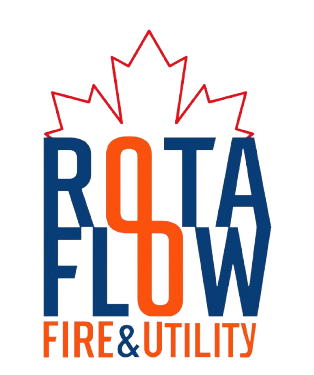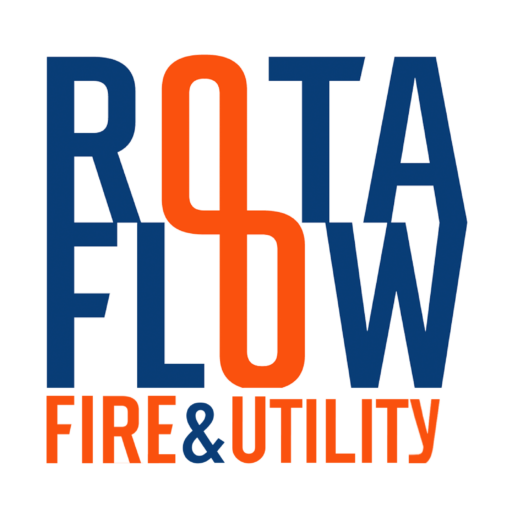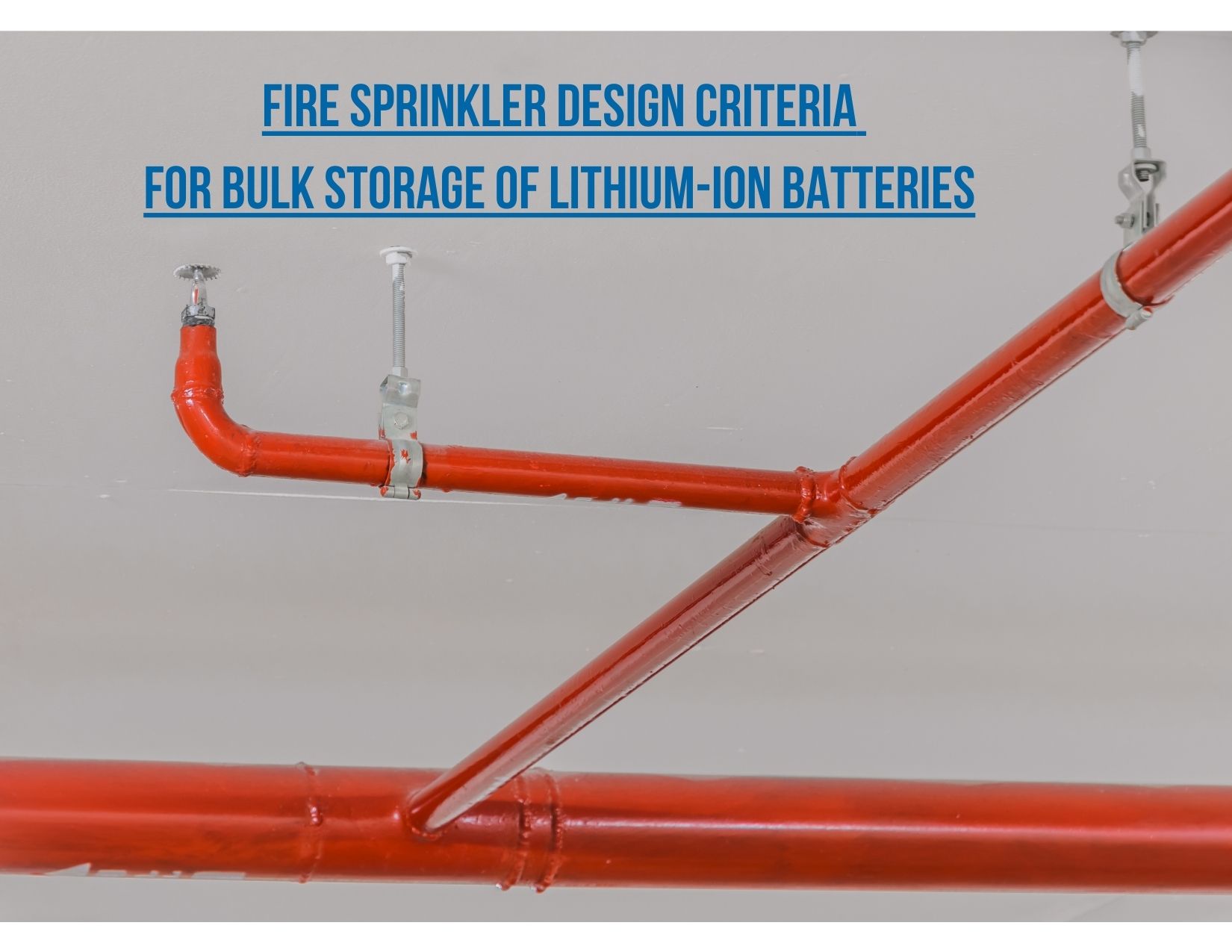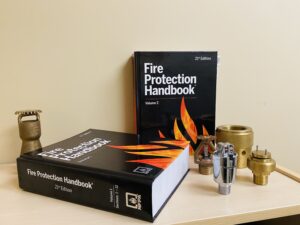INTRODUCTION: The NFPA Research Foundation and FM Global commissioned studies to create protection standards for rack storage of cartoned Li-ion battery packs. Phase III found that Cartoned Unexpanded Plastics (CUP) were a suitable substitute for Li-ion batteries, providing the protection system design suppresses the fire within 5 minutes. FM Data Sheet 8-1 specifies a maximum ceiling height of 40 feet, three layers of rack or palletized storage, 12 sprinklers flowing at 35 psi, maximum battery state of charge of 60%, electrolyte weight of 20%, and maximum battery capacity of 41 Ah. NFPA 13 requires prescriptive requirements for Li-ion batteries.
Fire Sprinkler Design Criteria for Bulk Storage of Lithium-Ion Batteries
Lithium-Ion (Li-ion) battery protection has been extensively explored by NFSA in recent publications. The National Fire Sprinkler Magazine’s May-June 2021 issue covered Li-ion battery-powered Energy Storage Systems. The same subject was covered in TechNotes #466, which focused on the design and implementation of sprinkler systems in these establishments. Additionally, an article on the emerging trend of waste management facility fires brought on by improperly discarded Li-ion battery disposal will appear in the next issue of the National Fire Sprinkler Magazine. Although there has been a lot of discussion, not all problems have been explored.
Current Guidelines
Li-ion batteries have a wide range of purposes right now, and those uses and applications are expanding every day. Due to their extensive use, it is necessary to store a lot of these cells or the equipment they power. Establishing the classification of the commodities is typically the first stage in determining design criteria for storage, and this is where the issue arises. Li-ion batteries are included in Annex Table A.20.4 (a) of NFPA 13, 2022 edition, as a product that NFPA 13 does not cover. It is made clear in this section that Li-ion batteries are not eligible for prescriptive criteria under NFPA 13. The next option might be a performance-based design, although it might be challenging to get an AHJ’s approval without extensive testing to support any proposed criteria.
The Research
Fortunately, even though NFPA 13 does not specify design standards or commodity classifications for Li-ion batteries, The NFPA Research Foundation and FM Global commissioned studies to aid in the creation of protection standards for rack storage of cartoned Li-ion battery packs. The first of the three phases that made up this project was a hazard study titled “Lithium-Ion Batteries Hazard and Use Assessment.” This analysis is based on a review of the literature on battery technology, failure modes and events, usage, codes, and standards, as well as hazard assessment throughout the storage and distribution life cycle. The “Lithium-Ion Batteries Hazard and Use Assessment” phase, which is the second, compares the flammability characterization of typical lithium-ion batteries to typical goods in storage. Following FM Global’s testing in phase III, which resulted in the publication of a study titled “Flammability Characterization of Lithium-ion Batteries in Bulk Storage,” NFPA published a report based on the information FM Global had cited.
The findings in Phase III were the most significant in terms of actual, practical fire sprinkler design requirements since each phase built on the one before it. While recommendations for criteria were made, the FM Global report made it clear that the testing did not yield the same level of information about protection system performance as that obtained through commodity classification, so a commodity classification was not established. This is a crucial distinction, as only the criteria specifically suggested for the arrangement can be employed without further testing because the commodity classification has not been established. The report’s references to storage conditions are as follows:
-
- Up to 15 feet of rack storage.
- 30 foot ceiling heights
- Small-format li-ion batteries in bulk packaging made of corrugated cardboard, including polymer cells, power tool packs made up of 18650-format cells, and cylindrical cells with a 50% level of charge.
Phase II determined that Cartoned Unexpanded Plastics (CUP) were a suitable substitute for Li-ion batteries, providing the protection system design suppresses the fire within 5 minutes, due to the expense and availability of large numbers of Li-ion batteries. Essentially, the battery cells, enclosed in a plastic casing and cartoned, would not be harmed, which could result in a thermal run-away incident, if the suppression system can put out the fire within 5 minutes.
Testing
In the end, two tests were carried out in phase III utilizing a 15-foot rack storage array with three tiers that was centered between four sprinklers. Both tests used sprinklers with a 165° F rating. In the first test, K-25.2 sprinklers were used beneath a 30-foot ceiling, while in the second, K-14.0 sprinklers were used beneath a 25-foot ceiling. The effectiveness of the ceiling level sprinklers could not be determined in either test since the CUP commodity cartons ruptured before the initial sprinkler operation and the CUP commodity itself burned for longer than the anticipated battery enrollment duration of 5 minutes.
Despite having mixed results, this research did offer helpful suggestions and support for other studies regarding the bulk storage of cartoned Li-ion batteries. Future testing will be substantially less expensive because to the equivalence developed in phase II, which will allow cartoned unexpanded plastics to be used as a surrogate good. Additionally, FM Global has enough information from phase III to publish protection requirements.
FM Criteria
The only prescriptive standard currently in use for the storage of Li-ion batteries is FM Data Sheet 8-1, which specifies a maximum ceiling height of 40 feet and a maximum number of layers of rack or palletized storage of no more than three. The calculations are based on 12 sprinklers flowing at a minimum pressure of 35 psi, and the sprinklers must be either K-22.4 or K-25.2. The maximum battery state of charge of 60%, the maximum electrolyte weight of 20%, and the maximum battery capacity of 41 Ah are further restrictions on the use of this criterion. Only cellulose and/or unexpanded plastic should be used for internal packing, and the container must be a carton. Scheme A from FM Data Sheet 7-29 must be used if the maximum battery and package properties are exceeded.
Future NFPA Criteria
Even though it’s likely that further testing will be required before NFPA 13 specifies requirements unique to Li-ion batteries, this study endeavor will enable the sector to advance. Prescriptive requirements that have been authorized are required and might not be too far off.
Courtesy: This edition of TechNotes was written by Jeff Dunkel, P.E., Fire Protection Engineer for the NFSA.



